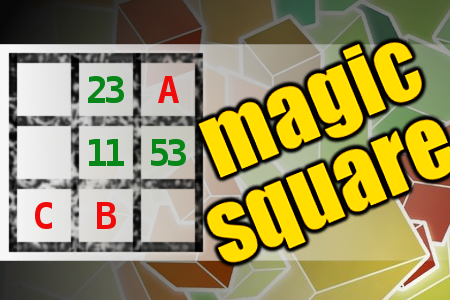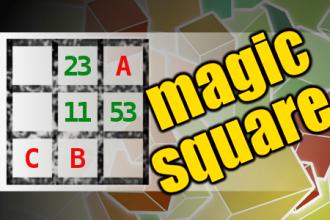MAGIC SQUARE: Calculate A*B+C
The aim is to place the some numbers from the list (11, 13, 15, 21, 23, 25, 51, 53, 55) into the empty squares and squares marked with A, B an C. Sum of each row and column should be equal. All the numbers of the magic square must be different. Find values for A, B, and C. Solution is A*B+C.Correct answers: 18
The first user who solved this task is Djordje Timotijevic.
#brainteasers #math #magicsquare


